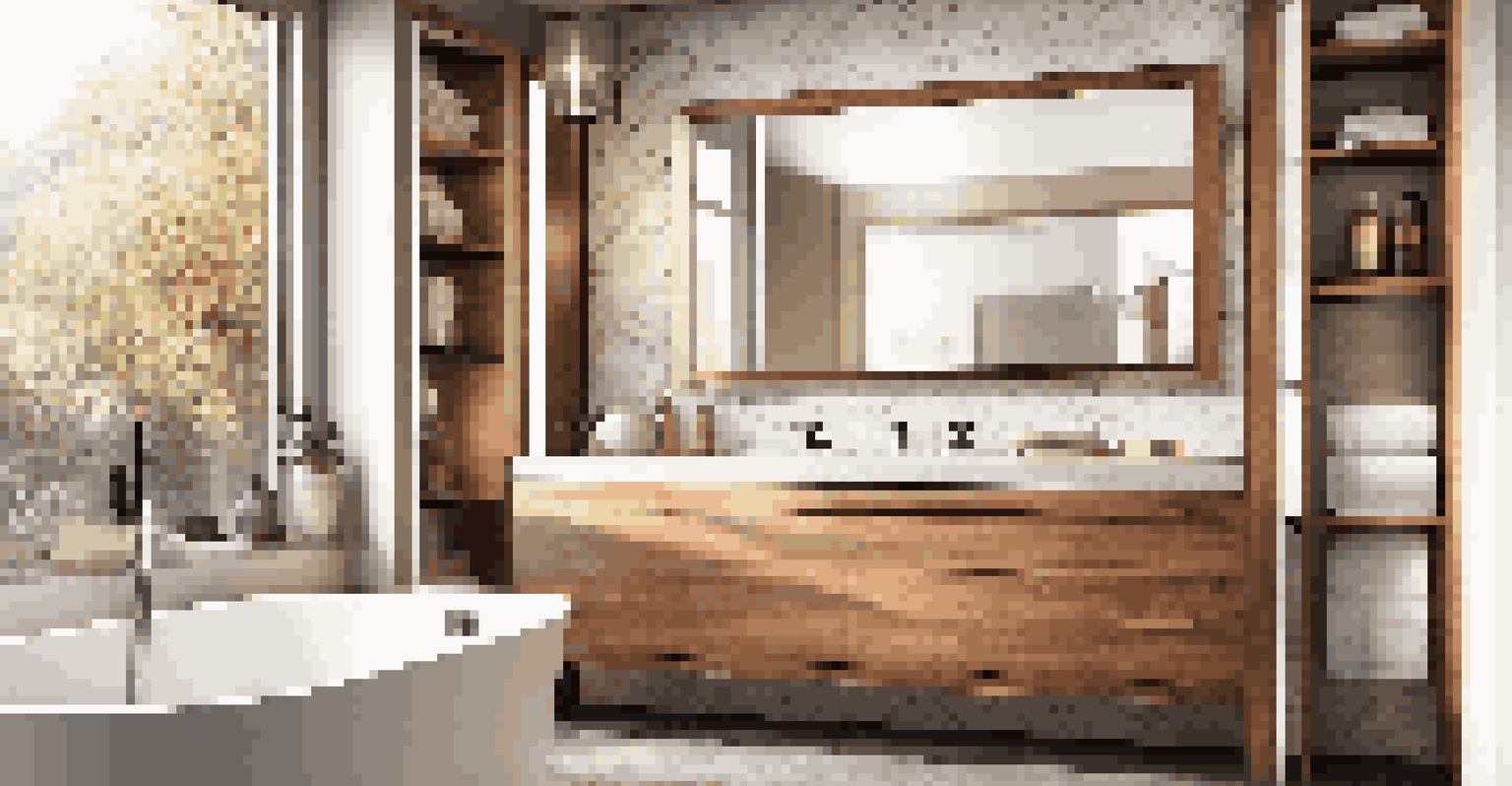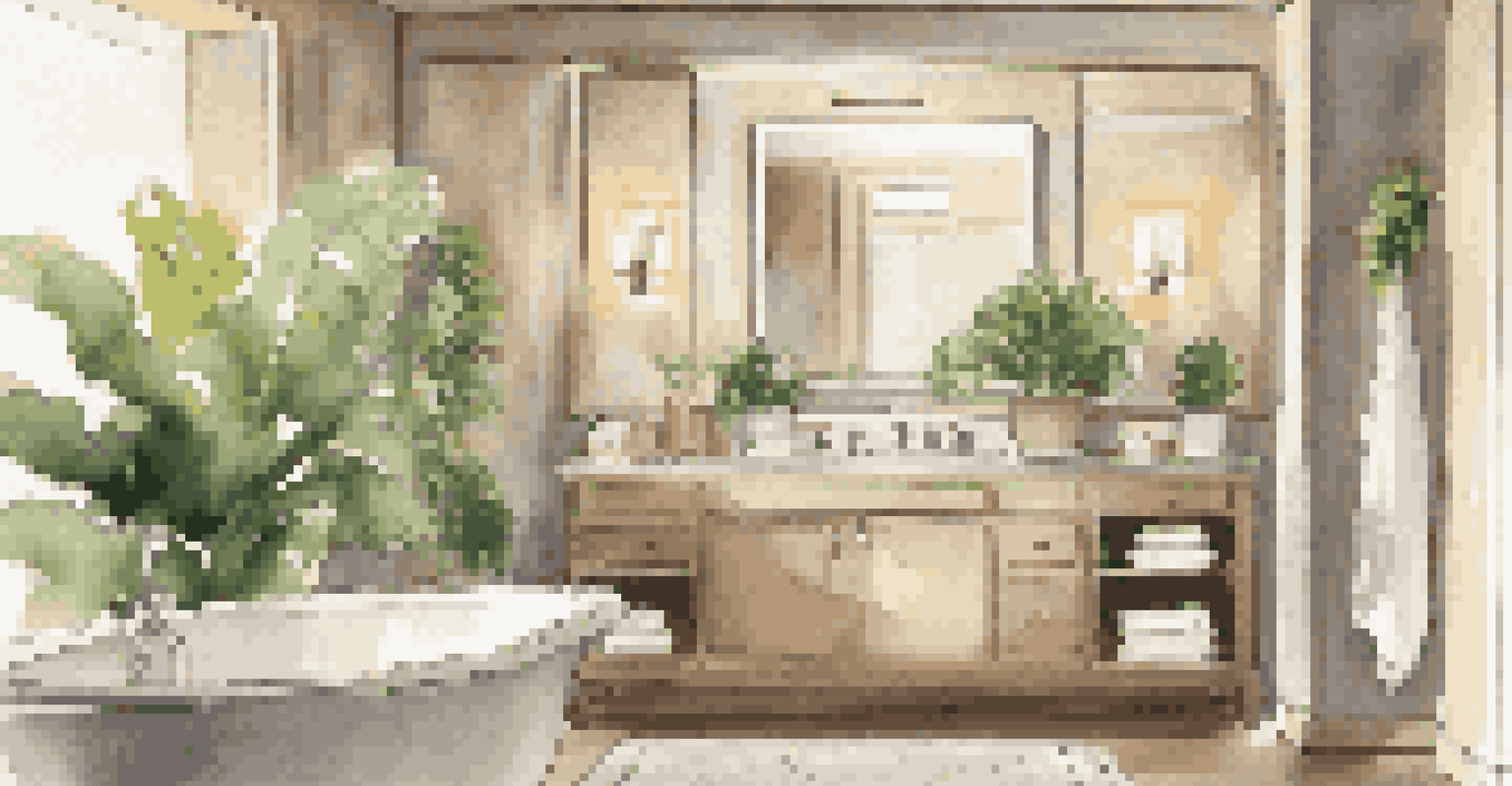Avoiding Mistakes When Planning Bathroom Renovations

Understand Your Budget Before Starting Renovations
Before diving into any renovation project, it's crucial to establish a clear budget. This will guide your decisions and help you avoid overspending, which is a common pitfall. For instance, if you allocate too much to high-end fixtures, you might find yourself skimping on essential plumbing work.
A budget is telling your money where to go instead of wondering where it went.
Creating a budget also means considering all potential expenses, from materials to labor and even unexpected costs that may arise. By planning for these contingencies, you can prevent financial strain later on. Think of your budget as a roadmap; without it, you might end up lost in the renovation process.
Lastly, don’t forget to set aside a small portion of your budget for those unexpected surprises. Whether it's a plumbing issue or a change in design, having a buffer can save you from unnecessary stress and keep your project on track.
Choose the Right Layout for Your Space
The layout of your bathroom is one of the most crucial aspects of your renovation. A well-thought-out layout can enhance functionality and make your space feel larger. For example, if your bathroom is small, consider a floating vanity to free up floor space and create an airier feel.

Additionally, think about how you use the space daily. If you’re often rushing in the morning, ensure that the layout supports a smooth flow of movement. Imagine how frustrating it would be if the toilet was placed right next to the shower, making it difficult for multiple users.
Establish a Clear Budget First
A well-defined budget serves as a roadmap to guide your renovation decisions and prevent overspending.
Remember, a good layout not only improves functionality but also adds to the overall aesthetic of your bathroom. Take the time to visualize and sketch out different options before settling on one that works best for your needs.
Research Materials and Fixtures Thoroughly
When renovating a bathroom, the materials and fixtures you choose can significantly impact both the look and functionality of the space. It's important to conduct thorough research to find options that suit your style and budget. For example, while marble looks stunning, it may not be the most practical choice for high-moisture areas.
The details are not the details. They make the design.
Reading reviews and comparing products can also help you make informed decisions. A fixture might look great in the showroom, but user experiences may reveal issues you hadn’t considered. Therefore, take advantage of online resources and forums to gather insights from other homeowners.
Additionally, consider the long-term maintenance of the materials you choose. Opting for low-maintenance options can save you time and hassle in the long run, allowing you to enjoy your new bathroom without constant upkeep.
Hire Professionals Wisely for Your Renovation
While DIY projects can be fun, some bathroom renovations require professional expertise. Hiring the right professionals can make a world of difference in the quality of your renovation. Whether it's a plumber, electrician, or contractor, be sure to check their credentials and reviews before making a decision.
Take the time to interview potential hires and ask for examples of their previous work. This will help you gauge their experience and whether their style aligns with your vision. Think of it as finding the right team for a sports match; the more skilled players you have, the better your chances of success.
Choose an Efficient Layout
The layout of your bathroom can enhance functionality and aesthetics, making it essential to plan thoughtfully.
Lastly, don’t shy away from asking for references. Speaking with past clients can provide valuable insights into how the professional operates and whether they deliver on their promises.
Plan for Proper Lighting in Your Bathroom
Lighting can make or break the ambiance of your bathroom, so it’s important to plan accordingly. A well-lit space enhances functionality and can even make the room feel larger. Consider a mix of task lighting, such as sconces near mirrors, as well as ambient lighting to create a warm atmosphere.
Moreover, natural light should not be overlooked. If possible, incorporate windows or skylights to bring in daylight, which can significantly improve the mood of the space. Just imagine stepping into a bright, welcoming bathroom in the morning instead of a dimly lit one.
Finally, don’t forget about the dimmers. Installing dimmer switches allows you to adjust the brightness based on your mood and the time of day, making your bathroom more versatile.
Incorporate Smart Storage Solutions
Bathroom storage is often overlooked, yet it plays a vital role in keeping your space organized and visually appealing. Consider incorporating smart storage solutions, such as built-in shelves or cabinets that maximize wall space. For instance, a recessed shelf in the shower can provide a stylish way to store toiletries without cluttering the area.
Additionally, think about multifunctional furniture. A vanity with drawers can serve as both a workspace and storage area. This not only saves space but also helps maintain a clean and tidy environment, which is essential in a bathroom.
Finalize Design Before Starting
Solidifying your design before beginning work helps avoid costly mistakes and ensures a cohesive final result.
Lastly, don't be afraid to get creative. Use decorative baskets or stylish containers to store items, making your bathroom both functional and aesthetically pleasing.
Stay Flexible and Open to Changes
Renovating a bathroom often comes with unexpected challenges that may require you to adapt your plans. Staying flexible is key to navigating these changes smoothly. For example, if you discover plumbing issues during the renovation, being open to adjusting your design can save time and avoid costly delays.
Additionally, remain open to suggestions from your professionals. They may offer insights or ideas you hadn’t considered, which could enhance the overall outcome of your project. Think of this as a collaborative effort; the goal is to create a space that you'll love for years to come.

Finally, trust your instincts. If something doesn’t feel right or align with your vision, don’t hesitate to voice your concerns. After all, you’re the one living in this space, and it should reflect your personal style and needs.
Finalize Your Design Before Starting Work
One of the most important steps in any renovation is finalizing your design. Taking the time to solidify your vision can prevent costly mistakes down the line. For example, if you change your mind about tile colors halfway through the renovation, it could lead to additional expenses and delays.
Creating a mood board or visual representation of your design can be a helpful tool. This allows you to see how different elements will work together and helps you communicate your ideas clearly with your contractors. Think of it as creating a blueprint for your dream bathroom.
Finally, ensure that all elements, from fixtures to colors, are agreed upon before work begins. A well-defined design will not only keep your project on track but will also lead to a cohesive and stunning final result.